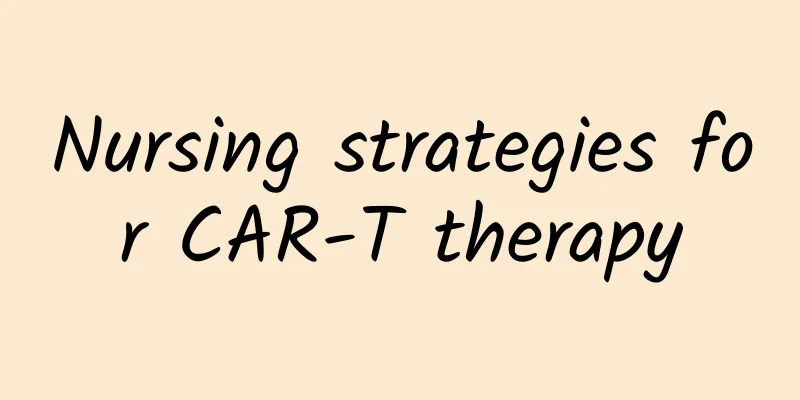Turning the tide: How to resolve the crisis when faced with sudden severe testicular pain?

|
Author: Li Haopeng, resident physician at Shanghai Tongji Hospital Reviewer: Wu Gang, deputy chief physician, Shanghai Tongji Hospital Male friends, have you ever heard of a disease called "testicular torsion"? It may occur suddenly and pose a serious threat to your reproductive health. Today, we will unveil the mystery of "testicular torsion" and protect your "gland of life". 1. Understanding testicular torsion Testicular torsion, also known as spermatic cord torsion, is a male emergency. It refers to the abnormal rotation of the testicle and its blood supply (spermatic cord), resulting in blood flow obstruction. This rotation is like the roots of a tree being tightly entangled, unable to transport water and nutrients normally, causing the testicle to fall into a state of hypoxia. Figure 1 Copyright image, no permission to reprint 2. Identify symptoms and seek medical attention promptly 1. Severe pain The most typical symptom of testicular torsion is sudden, severe scrotal pain that radiates to the groin or lower abdomen. This pain often occurs suddenly at night or after strenuous activity, and continues to worsen and become unbearable. Figure 2 Copyright image, no permission to reprint 2. Swelling and tenderness The affected testicle may appear swollen and painful to the touch, and the skin of the entire scrotum may even become tight and shiny. 3. Scrotal elevation increases pain Some patients find that the pain is exacerbated when the scrotum is elevated or gently supported. 4. Associated symptoms Severe testicular torsion may also cause visceral nerve reflex symptoms such as nausea and vomiting. 3. Reveal the hazards and attach great importance to them 1. Testicular necrosis The obstruction of blood flow caused by testicular torsion is like putting a noose on the source of life. Once there is a lack of adequate blood supply, the testicular tissue will undergo irreversible necrosis in a short period of time, which will not only make the patient lose his fertility, but may also cause serious complications such as local infection and abscess. 2. Impaired fertility Even with timely surgical intervention, prolonged ischemia may potentially damage spermatogenesis, leading to a significant decrease in fertility or complete loss of fertility. 3. Psychological stress Patients with testicular torsion also have to endure multiple psychological pressures such as pain, surgery and fertility anxiety, which have a serious impact on their quality of life. 4. Response strategies to protect health 1. Seek medical attention promptly When symptoms such as sudden unilateral scrotal pain occur, testicular torsion should be highly suspected. The golden rescue time for testicular torsion is usually within 6 hours after onset. The earlier the diagnosis and repositioning surgery are performed, the higher the success rate. 2. Professional diagnosis The doctor will make a diagnosis based on the medical history, physical examination, and auxiliary examinations (such as color Doppler ultrasound). If necessary, emergency surgical exploration will be performed. 3. Surgery After a clear diagnosis, surgery should be performed as soon as possible. If the testicle is necrotic, the necrotic tissue needs to be removed to prevent the spread of toxins. 4. Postoperative recovery After surgery, you need to strictly follow the doctor's instructions and have regular checkups to ensure blood supply is restored and inflammation subsides. At the same time, adjust your lifestyle and avoid strenuous exercise. 5. Scientific prevention and preparation 1. Enhance self-care awareness Learn about testicular torsion and raise awareness. Adolescents and men with a family history should do regular self-examinations to familiarize themselves with the normal state of the testicles. 2. Maintain moderate exercise Choose sports that have less impact on the reproductive system, such as swimming, jogging, etc. Avoid strenuous or excessive physical activities to reduce the risk of scrotal injury. Wear well-fitting and comfortable sports equipment that provides good support and protection. Figure 3 Copyright image, no permission to reprint 3. Dress appropriately Choose underwear that is breathable, loose and comfortable to reduce pressure on the scrotum and high temperature environment, and prevent testicular torsion. 4. Treat related diseases promptly Actively treat diseases such as cryptorchidism and epididymitis to reduce the risk of testicular torsion. 5. Regular medical check-ups Regular male reproductive health checks, especially for high-risk individuals, can help detect and address potential problems early through professional medical evaluation. Although testicular torsion is an emergency, as long as we are vigilant, identify it in time and take action, we can effectively avoid its serious consequences. Male friends are advised to cherish their own health and seek medical attention as soon as suspicious symptoms occur. |
<<: Just for these 5 points, you should have Vaseline at home!
>>: Protect your baby's skin in winter: Tips for winter children's skin care
Recommend
When will the third season of Ateen be released? Who are the male and female protagonists of Ateen3?
When will the third season of ateen be released? ...
Severe cervical erosion surgical care
Speaking of cervical erosion, I believe that in d...
How to treat blocked fallopian tubes
The fallopian tube is an important organ involved...
How to treat left uterine adnexal cyst?
The left side of the uterus in a woman's body...
What exactly is causing itching in women’s private parts?
I believe that women are not unfamiliar with the ...
What preparations should be made before the college entrance examination? How to adjust your mentality before the college entrance examination
Many people say that the college entrance examina...
One watermelon = six bowls of rice? Fruits are so sweet, will they make you fat?
A bite of ice watermelon in summer Instantly refr...
What is fetal movement like at 27 weeks
People often judge the health or growth of the fe...
What are the treatments for adenomyosis?
Adenomyosis, to put it simply, is a tumor growing...
What to do if you get "hot" after eating oranges, eating melon seeds, and drinking beverages during the Chinese New Year? 4 ways to relieve it
During the holidays at home, I can’t stop eating ...
In which province of my country are the Dunhuang Mogao Grottoes located? When is the best season to visit the Dunhuang Mogao Grottoes?
Going to Mogao Grottoes can improve your cultural...
The best time to check for ectopic pregnancy
Ectopic pregnancy is a common gynecological disea...
Is it better to have a long or short menstrual period?
For many women, they want to keep their bodies in...
Can I eat watermelon after having an abortion?
Watermelon is a cool fruit so it is better not to...
Four major symptoms of polycystic ovary that women should know
The ovaries are one of the most important organs ...









